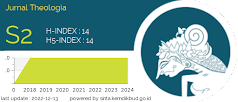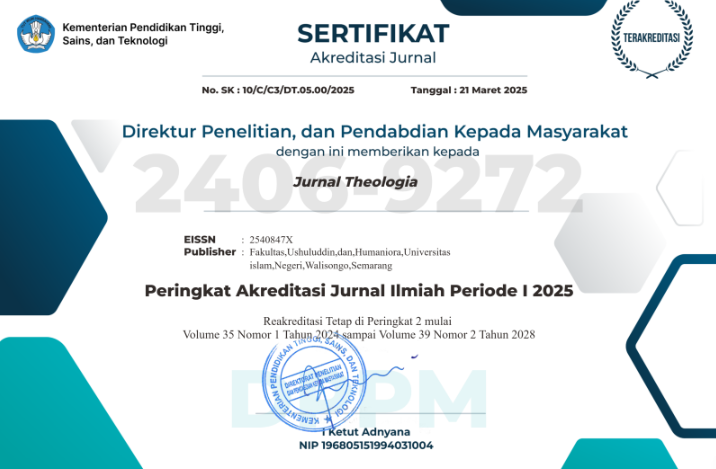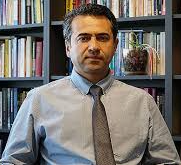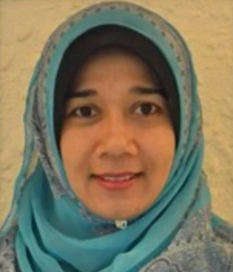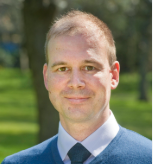Public Perception to Covid-19 Outbreak: Study of Mysticism and Spirituality Shalawat Simtu al-Duror
DOI:
https://doi.org/10.21580/teo.2021.32.1.8237Keywords:
coronavirus pandemic, mysticism, spirituality resilience, shalawat simtu al-durarAbstract
The Corona Virus pandemic has created policies to foster people to stay healthy and free from this disease. However, there are groups of people who ignored the covid-19 protocol for some mystical and spiritual reasons. This study taking place in Mranggen central java, observing the Majlis shalawat of Jalatunda. The congregation of zikr and prayers of Jalatunda believe that the shalawat of Simtu al-Durar may avoid them from all kinds of diseases. The value of mysticism strengthens the spirituality of the congregation. We use a phenomenological approach to describe and explain each variable into material for analysis. This study found that the mysticism exists in public belief has become a vehicle for the practice of reciting shalawat which further improves the spirituality of the congregation of the assembly.
Downloads
References
Ahimsa-Putra, Sartini, Al Makin, and Heddy Shri. “A Preliminary Survey on Islamic Mysticism in Java’.” Analisis XVI, no. 2 (2016).
Ahmad. “Interview : Ahmad.” 2021.
Al-Qurthubi, Muhammad bin Ahmad. Al-Jami’ Li Ahkam Al-Qur’an, Jilid VII. Vol. VII. Kairo, 2010.
Alawiy, Sayyid Muhammad. Jala’u Al-Afham Syarh ’Aqidah Al-’awam, 2004.
Ar-Razi, Fakhrudin. Mafaatih Al-Ghaib, Jilid XXV. Beirut: Daar al-Fikr, 1981.
Bruinessen, Martin. Tarekat Naqsyabandiyah Di Indonesia. Bandung: Mizan, 1996.
Chapra, Umer. Peradaban Muslim: Penyebab Keruntuhan Dan Perlunya Reformasi. Jakarta: Amzah, 2010.
Collins, Randal. “H. Paul Douglas Lecture the Four M’s of Religion: Magic, Membership, Morality and Mysticism’.” Review of Religious Research 50 (2008).
Findlay, John. “The Logic of Mysticism.” Religious Studies 2, no. 2 (1967): 153.
Geels, Antoon. Subud and the Javanese Mystical Tradition. Richmond, Surrey: Curzon, 1997.
Geertz, Clifford. Priyayi Dalam Masyarakat Jawa. Bandung: Dunia Pustaka Jaya, 1981.
Hajjaj, Muhammad Fauqi. Tasawuf Islam & Akhlak. Jakarta: Amzah, 2011.
Hanif, Agus. “Interview : Agus Hanif.” 2021.
Husein Al-Habsyi, Ali. “Untaian Mutiara Kisah Kelahiran Manusia Utama: Akhlak.” Solo, 1992.
Husni, Musthofa. Athlas Lin Nashri Wal Intaji Wal I’lamiy. 1st edn. Kairo: Daar al-Fikr, 2015.
Ibrahim, Badruddin. “Tazkirah Al-Saami’ Wa Al-Mutakallim Fii Adab Al-’aalim Wa Al Muta’allim.” Daar al-Basya’ir al-Islamiyah, 2016.
Kalish, Naomi. “Evidence-Based Spiritual Care: A Literature Review.” Current Opinion in Supportive and Palliative Care 6, no. 2 (June 2012): 242–46. https://doi.org/10.1097/SPC.0b013e328353811c.
Kane, Julie. “Varieties of Mystical Experience in the Writings of Virginia Woolf.” Twentieth Century Literature 41, no. 4 (1995): 328–49. http://www.jstor.org/stable/441534.
Khalil, Amal I, Rawan E Nasr, and Rahaf E Enar. “Relationship between Stress, Immune System, and Pandemics of Coronaviruses’ COVID19: Updates Narrative Review.” European Journal of Molecular & Clinical Medicine 7, no. 10 (2020).
Khalil, Umi Azizah. Shollu ’Alan Nabi. Yogyakarta: Araska, 2020.
Koentjaraningrat. Kebudayaan Jawa. Jakarta: Balai Pustaka, 1984.
Kuntowijoyo. Dinamika Sejarah Umat Islam Indonesia. Yogyakarta: Pustaka Pelajar, 1994.
———. Muslim Tanpa Masjid. IRCiSoD, 2018. https://books.google.co.id/books?id=4J6sDwAAQBAJ.
Lie, Halie Daniel. “Analisa Kritis Terhadap Pandangan Unio Mystica Ditinjau Dari Teologi Perjanjian Baru’.” Veritas 2, no. 3 (2001).
Madrah, Muna Yastuti, Nailil Muna, and Tali Tulab. “Pandemik Dalam Masyarakat Risiko.” Wahana Akademika 8, no. 1 (2021): 57–69.
Morissan. Teori Komunikasi Individu Hingga Massa. Jakarta: Kencana Media Group, 2013.
Muhammad Khalid Tsabit. “Tarikh Al-Ihtifal Bi-Maulid Al-Nabi Shalla Allahu ’Alaihi Wa Sallama Wa Madhahirihi Fi Al-’Alam.” Kairo: Daar al-Maqtham wa al-Nasyr wa al-Tauzi, 2010.
Muhammad, Sayyid Syarif Abdullah. Al-Nafkhah Al-Ilahiah. Jakarta: Daar Ar-Raudha Al-Islamiyah, 2018.
Mulyana, Deddy. Metodologi Penelitian Kualitatif. Bandung: Remaja Rosdakarya, 2004.
Nasution, Harun. Falsafat Dan Mistisisme Dalam Islam. Jakarta: Bulan Bintang, 1995.
P, Holt B. Thirsty for God: A Brief History of Christian Spirituality. Minneapolis: Fortress Press, 2006.
Piedmont, L, Teresa A Wilkins, and Ralph L. An Epistemological Approach to Understanding Spirituality and the Numinous. 1st edn. New York: Routledge, 2019.
Seiler, Annina, Christopher P Fagundes, and Lisa M Christian. “The Impact of Everyday Stressors on the Immune System and Health.” In Stress Challenges and Immunity in Space, 2020. https://doi.org/10.1007/978-3-030-16996-1_6.
Simuh, Sufisme Jawa Transformasi Tasawuf Islam Ke Mistik Jawa. Sufisme Jawa Transformasi Tasawuf Islam Ke Mistik Jawa. 2nd edn. Yogyakarta: Bentang Budaya, 1996.
Stange, Paul. Kejawen Modern: Hakikat Dalam Penghayatan Sumarah. Yogyakarta: LKiS, 2009.
Subagya, Rachmat. Agama Asli Indonesia. 1st edn. Jakarta: Yayasan Cipta Loka Caraka, 1961.
Thohir, Umar Faruq. “Pemikiran Mistisisme Annemarie Schimmel.” Ulul Albab 13, no. 2 (2012).
Wainwright, William J. “Morality and Mysticism’.” The Journal of Religious Ethics 4, no. 1 (1976).
Wargadinata, Wildana. Spiritual Salawat. Malang: UIN –MALIKI Press, 2010.
Yazdi, Mehdi Ha’iri. Prinsip-Prinsip Epistemologis Dalam Filsafat Islam Dari Suhrawardi Vis Wittgenstein, Terj: Ahsin Muhammad. Jakarta: Paramadina, 2010.
Zawawi. “Interview : Zawawi.” 2021.

